 Kawasaki Z1000SX - Service manual > Exploded View, Coolant Flow Chart
Kawasaki Z1000SX - Service manual > Exploded View, Coolant Flow Chart
Exploded View
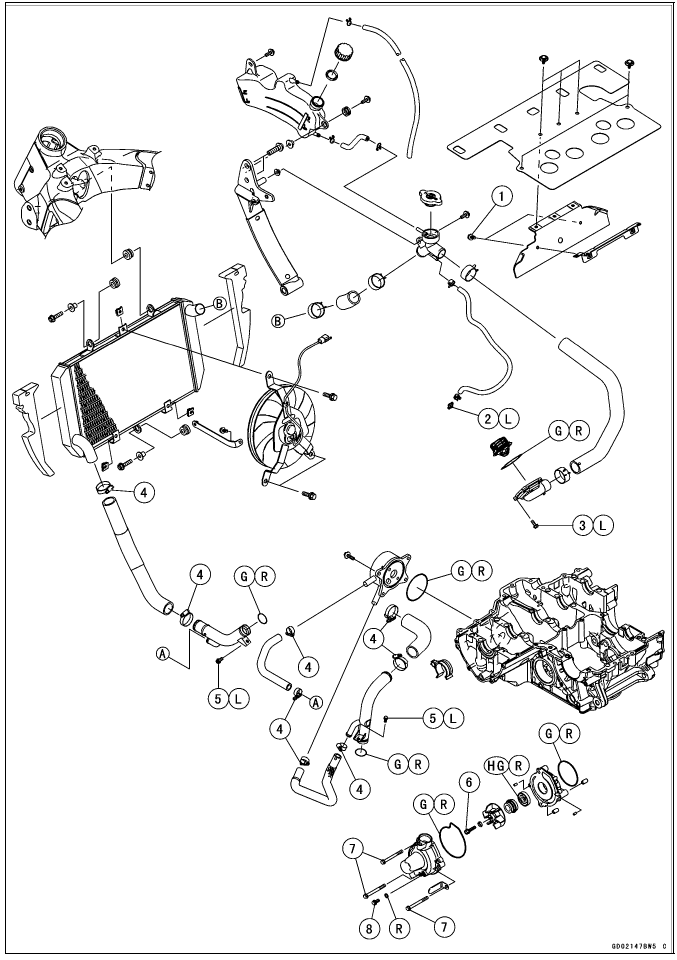
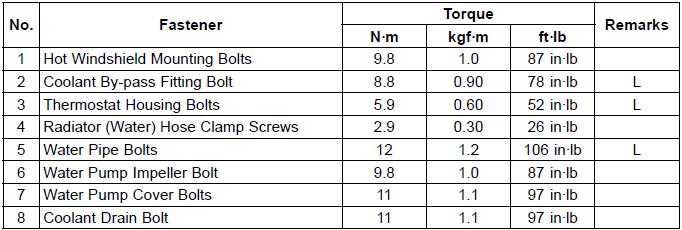
G: Apply grease.
HG: Apply high-temperature grease.
L: Apply a non-permanent locking agent.
R: Replacement Parts
Coolant Flow Chart
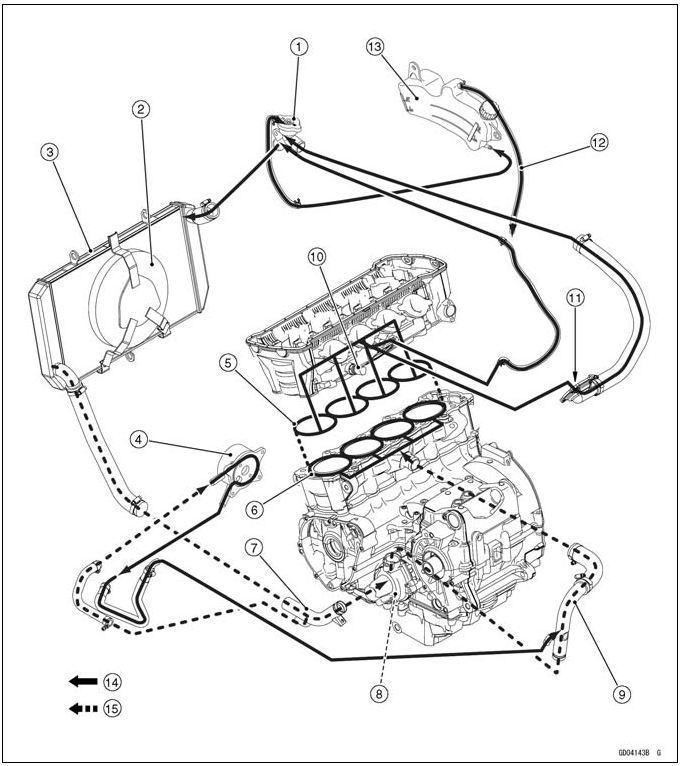
- Radiator Cap
- Radiator Fan
- Radiator
- Oil Cooler
- Cylinder Head Jacket
- Cylinder Jacket
- Inlet Pipe
- Water Pump
- Outlet Pipe
- Water Temperature Sensor
- Thermostat Housing
- Reserve Tank Overflow Hose
- Reserve Tank
- Hot Coolant
- Cold Coolant
Coolant Flow Chart
Permanent type antifreeze is used as a coolant to protect the cooling system from rust and corrosion.
When the engine starts, the water pump turns and the coolant circulates.
The thermostat is a wax pellet type which opens or closes with coolant temperature changes. The thermostat continuously changes its valve opening to keep the coolant temperature at the proper level.
When coolant temperature is less than 55ºC (131ºF), the thermostat closes so that the coolant flow is restricted through the air bleeder hole, causing the engine to warm up more quickly. When coolant temperature is more than 58 - 62ºC (136 - 144ºF), the thermostat opens and the coolant flows.
When the coolant temperature goes up beyond 100ºC (212ºF), the radiator fan relay conducts to operate the radiator fan. The radiator fan draws air through the radiator core when there is not sufficient air flow such as at low speeds. This increases up the cooling action of the radiator. When the coolant temperature is below 97.5ºC (208ºF), the fan relay opens and the radiator fan stops.
In this way, this system controls the engine temperature within narrow limits where the engine operates most efficiently even if the engine load varies.
The system is pressurized by the radiator cap to suppress boiling and the resultant air bubbles which can cause engine overheating. As the engine warms up, the coolant in the radiator and the water jacket expands. The excess coolant flows through the radiator cap and hose to the reserve tank to be stored there temporarily. Conversely, as the engine cools down, the coolant in the radiator and the water jacket contracts, and the stored coolant flows back to the radiator from the reserve tank.
The radiator cap has two valves. One is a pressure valve which holds the pressure in the system when the engine is running. When the pressure exceeds 93 - 123 kPa (0.95 - 1.25 kgf/cm², 13 - 18 psi), the pressure valve opens and releases the pressure to the reserve tank. As soon as pressure escapes, the valve closes, and keeps the pressure at 93 - 123 kPa (0.95 - 1.25 kgf/cm², 13 - 18 psi).
When the engine cools down, another small valve (vacuum valve) in the cap opens. As the coolant cools, the coolant contracts to form a vacuum in the system. The vacuum valve opens and allows the coolant from the reserve tank to enter the radiator.
Specifications
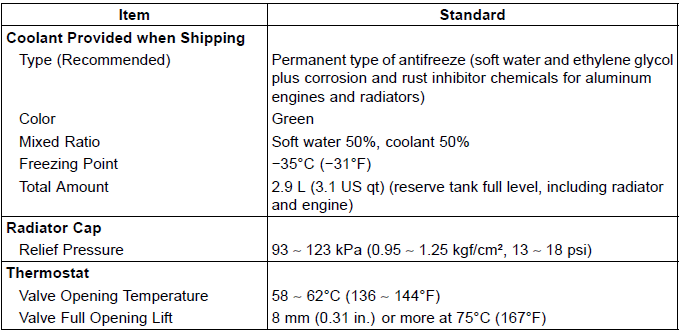
Special Tools
Bearing Driver Set: 57001-1129
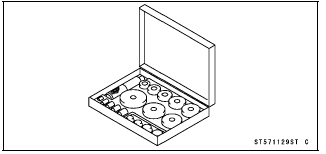
Oil Seal Driver: 57001-1660
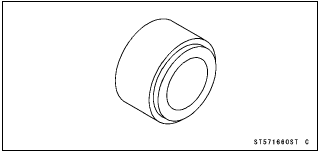
See also:
 Kawasaki Z1000SX - Service manual > Coolant
Kawasaki Z1000SX - Service manual > Coolant
Coolant Deterioration Inspection Remove the right lower fairing (see Lower Fairing Removal in the Frame chapter). Visually inspect the coolant [A] in the reserve tank.
 Rider's Manual BMW R 1250 GS GSA
Rider's Manual BMW R 1250 GS GSA Owner's Manual Harley-Davidson Sportster XL1200X Forty-Eight
Owner's Manual Harley-Davidson Sportster XL1200X Forty-Eight Owner's Manual Honda CBR650R
Owner's Manual Honda CBR650R Service manual Honda CBR650
Service manual Honda CBR650 Owner's Manual Honda PCX125
Owner's Manual Honda PCX125 Owner's Manual Kawasaki Z1000SX
Owner's Manual Kawasaki Z1000SX Service manual Kawasaki Z1000SX
Service manual Kawasaki Z1000SX Owner's Manual Lexmoto Echo
Owner's Manual Lexmoto Echo Owner's Manual Royal Enfield Interceptor 650
Owner's Manual Royal Enfield Interceptor 650 Service manual Royal Enfield Interceptor 650
Service manual Royal Enfield Interceptor 650 Owner's Manual Yamaha MT-07
Owner's Manual Yamaha MT-07